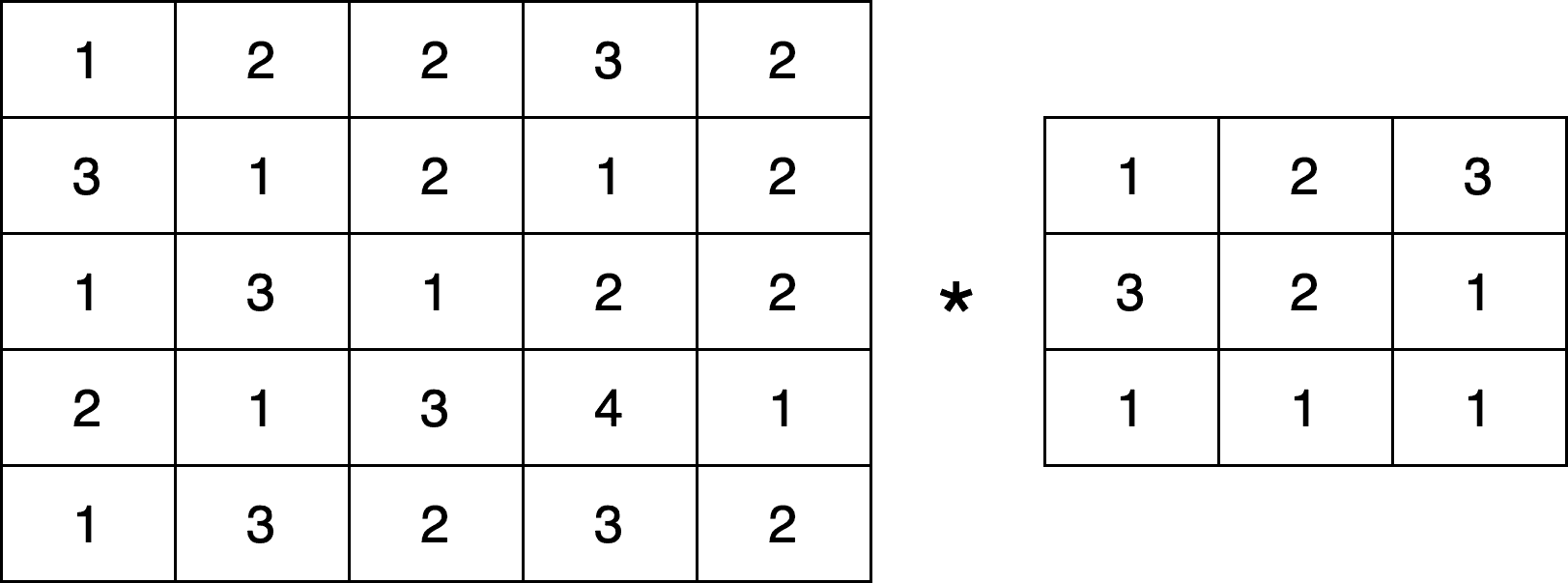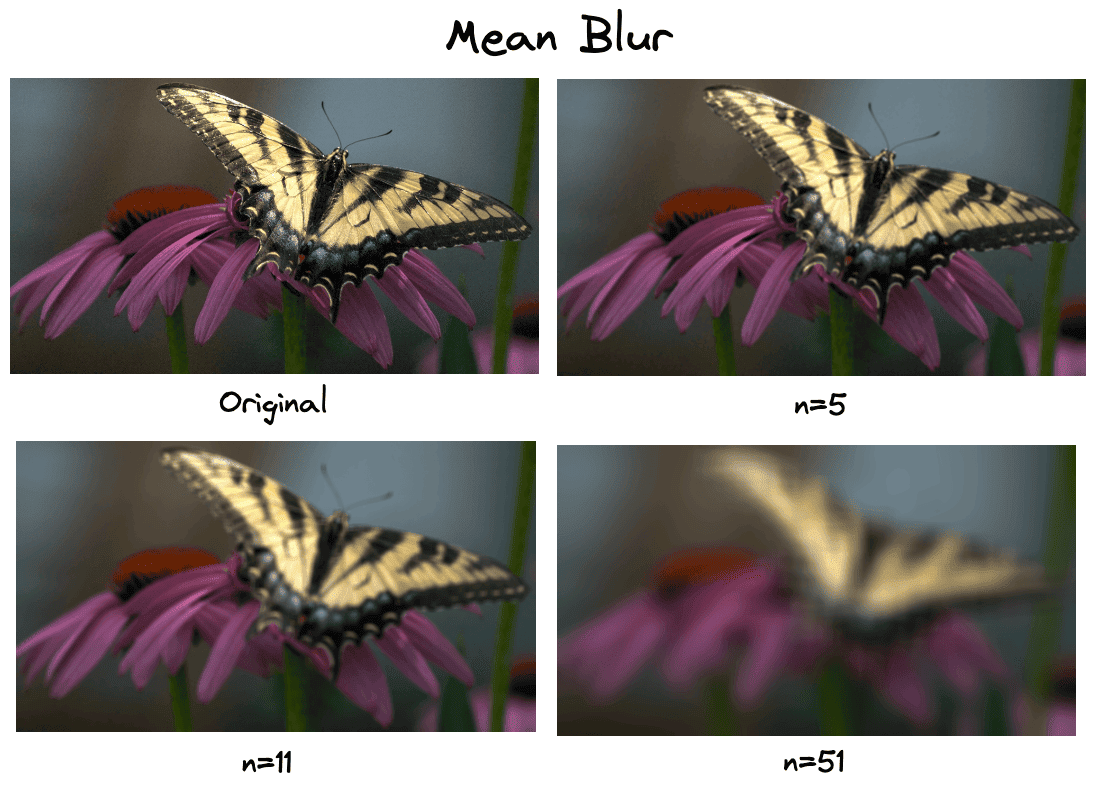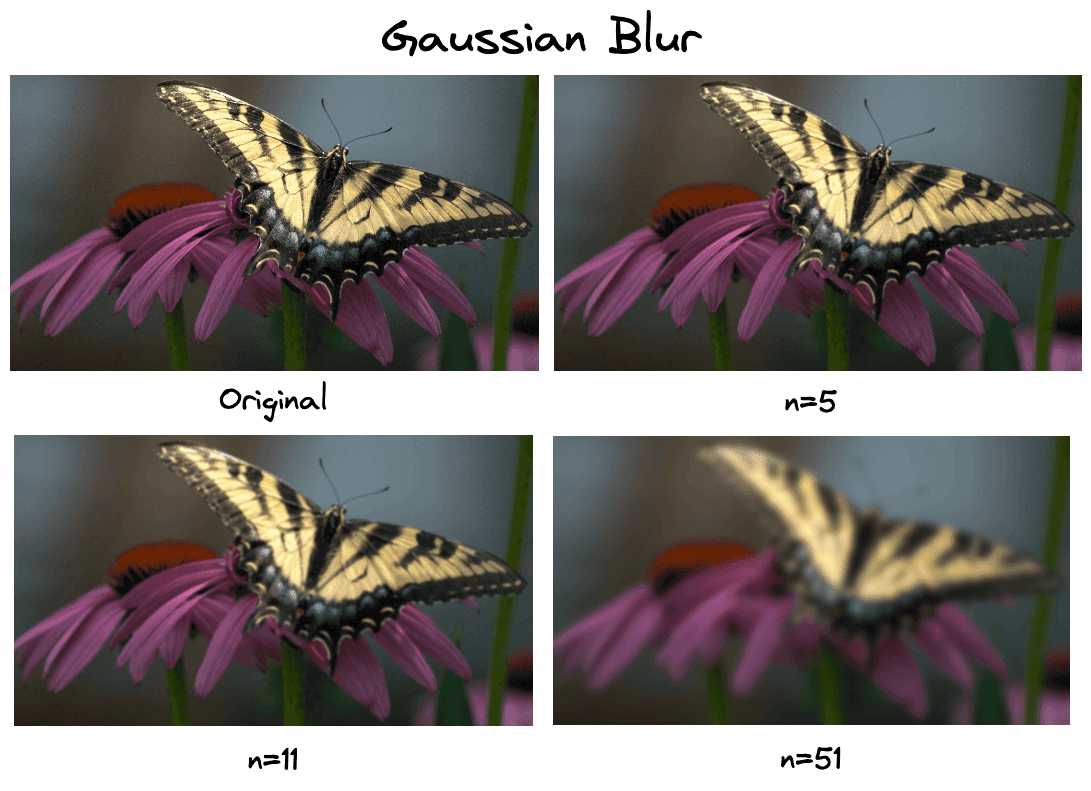1. 概述
本文将介绍图像中模糊操作的基本原理。我们将从卷积核(kernel convolution)讲起,它是所有图像模糊操作的核心机制。随后会讲解两种常见的模糊方式:均值模糊(Mean Blur)和高斯模糊(Gaussian Blur),并辅以具体示例说明它们之间的差异。
如果你从事图像处理、计算机视觉或相关领域的工作,理解这些基础知识对于后续的图像增强、特征提取等操作非常重要。如果你只是想快速了解“模糊是怎么做出来的”,这篇文章也适合你。
2. 卷积核操作(Kernel Convolution)
卷积核操作是图像处理中最基础、最常见的运算之一,广泛应用于边缘检测、模糊、锐化等图像变换中。
2.1 原理简述
卷积操作本质上是两个函数的结合,用于生成第三个函数,反映其中一个函数如何被另一个函数“影响”。在图像处理中,这个“影响”体现在图像与一个小矩阵(即卷积核)之间的运算。
具体来说,卷积过程如下:
- 将卷积核覆盖在图像的某个像素上;
- 对图像区域和卷积核进行逐元素相乘;
- 将乘积结果相加得到一个新值;
- 通常还会将结果除以卷积核所有元素的总和,以保持像素值的合理范围(归一化)。
✅ 这个过程其实就是图像局部区域的加权平均操作。
2.2 示例说明
假设我们有一张 5x5 的图像矩阵 I,以及一个 3x3 的卷积核 k:
图像 I:
1 2 2 1 3
3 1 2 2 1
1 3 1 2 1
2 1 3 1 2
3 2 1 1 3
卷积核 k:
1 2 1
2 2 2
1 2 1
我们以图像中心像素 I[2][2](值为 1)为例,进行卷积操作:
- 对应区域与卷积核相乘后求和:
S = 1×1 + 2×2 + 2×1 + 3×2 + 1×2 + 2×2 + 1×1 + 3×2 + 1×1 = 29 - 归一化:卷积核总和为 14,因此:
I * k = 29 / 14 ≈ 2.07 → 取整为 2
最终,该像素的值将被替换为 2。
⚠️ 注意:实际图像处理中,边缘像素通常需要做边界填充(padding),否则卷积后图像尺寸会变小。
2.3 图解示意
下图展示了卷积操作的过程:

3. 均值模糊(Mean Blur)
均值模糊是一种最简单的模糊方式,其核心思想是使用一个所有元素都为 1 的卷积核,对图像局部区域进行平均。
3.1 核心操作
例如,一个 3x3 的均值卷积核如下:
1 1 1
1 1 1
1 1 1
由于所有元素都为 1,所以每个像素的值将被其周围像素的平均值所替代。
3.2 示例演示
使用上述核对图像进行卷积后,每个像素的值将被替换成周围像素的平均值:

可以看到,图像变得“模糊”了,细节被平滑处理。
3.3 实际效果对比
下图展示了使用不同大小的均值核对同一张图像进行模糊的效果:

✅ 核越大,模糊效果越强。
❌ 但均值模糊的一个明显缺点是:它不保留图像边缘信息,边缘在模糊后容易丢失。
4. 高斯模糊(Gaussian Blur)
为了解决均值模糊边缘丢失的问题,我们可以使用高斯模糊。
4.1 高斯核原理
高斯模糊使用的是一个符合高斯分布的卷积核。越靠近中心的像素权重越高,远离中心的像素权重逐渐减小。
这使得模糊过程中,中心像素的信息被保留得更多,边缘信息也被部分保留。
4.2 示例核结构
一个典型的 3x3 高斯核如下:
1 2 1
2 4 2
1 2 1
归一化之后,中心点的权重最大,周围权重依次递减。
4.3 实际效果对比
下图展示了使用高斯模糊后的图像效果:

✅ 可以看到,图像模糊的同时,边缘依然清晰可见。
❌ 但高斯模糊的计算成本略高于均值模糊,因为每个像素的加权系数不同。
5. 总结
| 方法 | 原理 | 优点 | 缺点 |
|---|---|---|---|
| 均值模糊 | 所有核值为 1 | 简单快速 | 模糊边缘,丢失细节 |
| 高斯模糊 | 权重按高斯分布分布 | 保留边缘,视觉效果自然 | 计算复杂度略高 |
无论你是做图像增强、边缘检测,还是准备做图像分类,理解这些基础的模糊操作都非常有必要。在实际项目中,根据性能和效果需求,选择合适的模糊方式即可。
如果你在图像处理过程中遇到“模糊后边缘模糊严重”的问题,可以优先考虑使用高斯模糊。